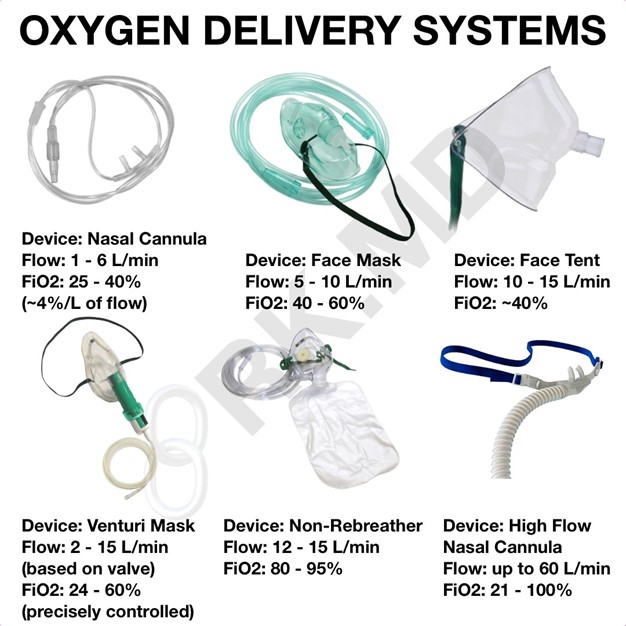A nurse is assisting with discharge planning for a client who is prescribed home oxygen at 1 to 2 L/min. The nurse should ensure that the client has which of the following supplies upon discharge?
Petroleum jelly
Reservoir bag
Nasal cannula
Oxygen mask
The Correct Answer is C
Since the client is prescribed home oxygen at 1 to 2 L/min, a nasal cannula is the most appropriate device for oxygen delivery in this scenario. A nasal cannula consists of two small prongs that are inserted into the client's nostrils, delivering oxygen directly into the nasal passages. It is a comfortable and commonly used device for low-flow oxygen therapy.
Petroleum jelly is not directly related to oxygen therapy and is not typically required for the use of a nasal cannula.
A reservoir bag is not typically used with a nasal cannula. It is a component of a different oxygen delivery system called a non-rebreather mask, which is used for high-flow oxygen therapy or in emergency situations.
An oxygen mask is also not typically used with a nasal cannula. It is a separate oxygen delivery device that covers the client's mouth and nose, delivering oxygen at a higher flow rate. Masks may be used in situations where higher concentrations or flows of oxygen are required, or when the client is unable to tolerate or use a nasal cannula effectively.

Nursing Test Bank
Naxlex Comprehensive Predictor Exams
Related Questions
Correct Answer is A
Explanation
The correct answer is choice a. Wear shoes with rubber soles.
Choice A rationale:
Wear shoes with rubber soles () - Quiet footwear minimizes noise disruption during sleep hours, promoting a better sleep environment.
Choice B rationale:
Conduct change of shift reports near the clients’ rooms () - Conducting reports near rooms creates noise and disrupts sleep. It’s best done in designated areas away from patients.
Choice C rationale:
Open curtains between clients in semi-private rooms () - Privacy and individual light control are crucial for sleep. Open curtains can disrupt a client’s sleep cycle.
Choice D rationale:
Turn on overhead lights briefly when checking IV lines () - Bright lights suppress melatonin production, a hormone vital for sleep. Using alternative light sources or dimmed lighting minimizes sleep disruption.
Correct Answer is D
Explanation
A. Incorrect. Tingling of the scalp is not a common adverse reaction following electroconvulsive therapy (ECT.
B. Incorrect. Voice alteration is not a common adverse reaction following ECT.
C. Incorrect. Neck pain is not a common adverse reaction following ECT.
D. Correct. Temporary memory loss is a common adverse reaction following ECT. Some clients may experience confusion and memory deficits immediately after the procedure, but these effects are typically temporary and resolve as the client recovers from the treatment.
Whether you are a student looking to ace your exams or a practicing nurse seeking to enhance your expertise , our nursing education contents will empower you with the confidence and competence to make a difference in the lives of patients and become a respected leader in the healthcare field.
Visit Naxlex, invest in your future and unlock endless possibilities with our unparalleled nursing education contents today
Report Wrong Answer on the Current Question
Do you disagree with the answer? If yes, what is your expected answer? Explain.
Kindly be descriptive with the issue you are facing.
